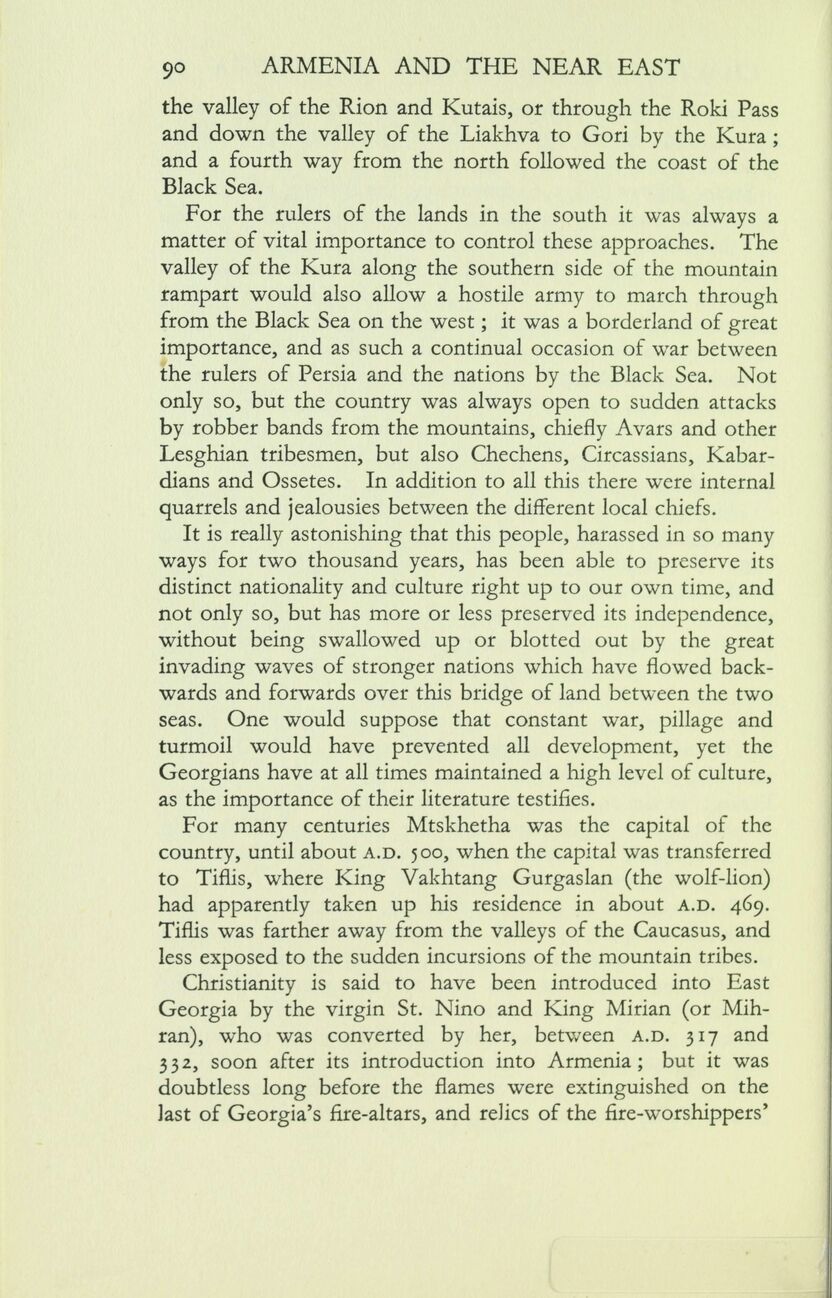
Full resolution (JPEG) - On this page / på denna sida - IV. Chapters in the history of Georgia

<< prev. page << föreg. sida << >> nästa sida >> next page >>
Below is the raw OCR text
from the above scanned image.
Do you see an error? Proofread the page now!
Här nedan syns maskintolkade texten från faksimilbilden ovan.
Ser du något fel? Korrekturläs sidan nu!
This page has never been proofread. / Denna sida har aldrig korrekturlästs.
ARMENIA AND THE NEAR EAST
90
the valley of the Rion and Kutais, or through the Roki Pass
and down the valley of the Liakhva to Gori by the Kura ;
and a fourth way from the north followed the coast of the
Black Sea.
For the rulers of the lands in the south it was always a
matter of vital importance to control these approaches. The
valley of the Kura along the southern side of the mountain
rampart would also allow a hostile army to march through
from the Black Sea on the west ; it was a borderland of great
importance, and as such a continual occasion of war between
the rulers of Persia and the nations by the Black Sea. Not
only so, but the country was always open to sudden attacks
by robber bands from the mountains, chiefly Avars and other
Lesghian tribesmen, but also Chechens, Circassians, Kabar
dians and Ossetes. In addition to all this there were internal
quarrels and jealousies between the different local chiefs.
It is really astonishing that this people, harassed in so many
ways for two thousand years, has been able to preserve its
distinct nationality and culture right up to our own time, and
not only so, but has more or less preserved its independence,
without being swallowed up or blotted out by the great
invading waves of stronger nations which have flowed back
wards and forwards over this bridge of land between the two
seas. One would suppose that constant war, pillage and
turmoil would have prevented all development, yet the
Georgians have at all times maintained a high level of culture,
as the importance of their literature testifies.
For many centuries Mtskhetha was the capital of the
country, until about a.d. 500, when the capital was transferred
to Tiflis, where King Vakhtang Gurgaslan (the wolf-lion)
had apparently tåken up his residence in about a.d. 469.
Tiflis was farther away from the valleys of the Caucasus, and
less exposed to the sudden incursions of the mountain tribes.
Christianity is said to have been introduced into East
Georgia by the virgin St. Nino and King Mirian (or Mih
ran), who was converted by her, between a.d. 317 and
332, soon after its introduction into Armenia; but it was
doubtless long before the flames were extinguished on the
last of Georgia’s fire-altars, and relics of the fire-worshippers’
<< prev. page << föreg. sida << >> nästa sida >> next page >>